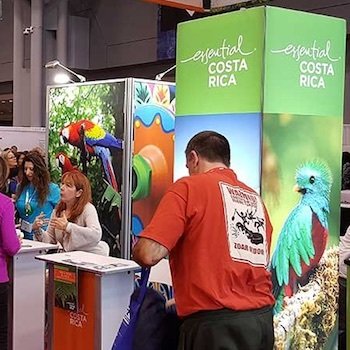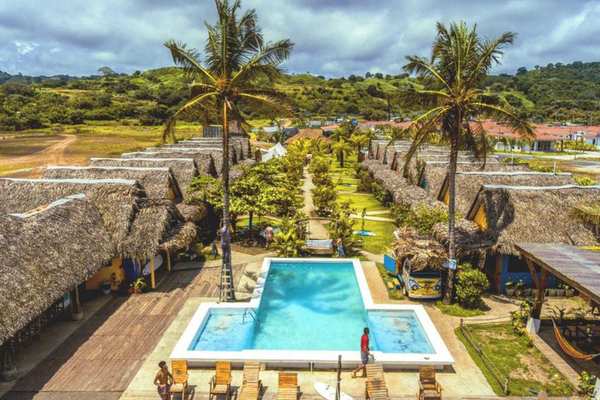
By the A.M. Costa Rica staff
During the International Fair of Tourism Fitur in Madrid, Spain, the Minister of Tourism, Maria Amalia Revelo, and the President of Iberia airlines, Luis Gallego, signed an agreement for advertising about Costa Rica.
Minister Revelo said the agreement with the Spanish airline, “marks the path of greater efforts to consolidate and strengthen (tourism to Costa Rica) in the Spanish and European markets.”
Luis Gallego, president of Iberia, said that flights between Spain and Costa Rica have been on-going for forty years. “We have been flying to Costa Rica for more than 40 years, promoting the country as a tourist destination throughout Europe, and we are delighted to renew our commitment to Costa Rica.”
The advertising campaign includes announcements in the airline magazine Round Iberia, on the airline’s social networks, and on the website www.iberia.com,” added the minister, but he did not provide the cost on the advertising campaign on Iberia airlines.
The Tourism Ministry also reported that the Costa Rican Tourism Institute is in the process of developing a three year advertising campaign for Iberia airlines. However, the price of that campaign has not yet been defined. As of last Friday, the Tourism Institute had invested $102,300 in a three-week advertising campaign in Spain.
The Costa Rican Institute of Tourism started a three-week advertising campaign on Friday the 18th, to promote tourism from Spain. The Blueroom agency in Spain developed the 90,000 euro ($102,300) campaign. This campaign is called “Yo estoy pura vida. Y tu cuando vienes?” or “I am the pure life, and when are you coming?”
The institute added that this campaign displays an image of a surfer in the middle of the sea on a poster in an area of 450 square meters in front of the Plaza de Cuzco* in the central Paseo de la Castellana in Madrid.
“The ad invites the Spanish citizens to escape from the winter and low temperatures to know the tourism attractions of our country,” said the institute statement.
The institute also published some posters in the Atocha train station* where there are images and videos of nature, fauna, adventure activities, waterfalls and beaches to attract Spanish tourists.
The promotional video and interactive digital screens are reproduced more than 1,000 times a day in that station, the institute said. In addition, the electric ramps for accessing the high-speed train of the Madrid-Barcelona were decorated with designs and colors, inspired by the typical Sarchí oxen carts.
According to Ireth Rodríguez, head of promotion of the institute, “For the first time in history, a Costa Rican campaign is being carried out on large-format outdoor media in the Spanish market, a medium that allows us to reach far and in high traffic strategic points like the Paseo de la Castellana and the Atocha Station.”
The institute said that Spanish tourists who visit Costa Rica stay an average of 13 nights and spend about $198 per day. Among the activities that most tourists enjoy: 89 percent come to observe flora and fauna, 87 percent come to the beach, 73 percent come to see volcanos and 63 percent come to hike along trails.
According to the institute, last year 69,000 Spanish tourists arrived in Costa Rica, which makes the country the fourth most important market of tourists from Europe.
(Reprinted from A.M. Costa Rica)







